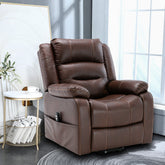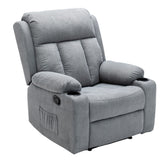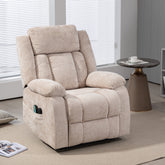Revolutionize Your Work Ergonomics: Why South African Professionals Need a Bathroom Storage Cart
Why Ergonomics Matter in the South African Workplace
Understanding Ergonomics: The Science Behind Comfort and Productivity
Ergonomics is the study of how people interact with their work environment. It aims to improve comfort and efficiency. In South Africa, this field is gaining importance in offices.

Ergonomics focuses on designing workspaces that fit the worker. It looks at factors like posture, movement, and physical stress on the body. The goal is to reduce strain and increase comfort.
South African workers often spend long hours at their desks. This can lead to health issues like back pain and eye strain. Ergonomics helps prevent these problems.
Good ergonomics can boost productivity. When workers are comfortable, they can focus better on their tasks. This leads to higher quality work and less time wasted.
Ergonomics isn't just about physical comfort. It also considers mental well-being. A well-designed workspace can reduce stress and improve mood.
The Direct Impact of Ergonomic Furniture on Employee Well-being and Efficiency
Ergonomic furniture can greatly improve employee health and productivity. In South Africa, where healthcare costs are rising, this is crucial.
Proper chairs can reduce back pain and improve posture. Adjustable desks allow workers to switch between sitting and standing. This movement can boost energy levels.
Ergonomic keyboards and mice can prevent repetitive strain injuries. These are common in office workers who type a lot. Preventing these injuries can save on medical costs.
Studies show that ergonomic furniture can reduce sick days. Workers are less likely to take time off due to pain or discomfort. This leads to increased productivity for companies.
Ergonomic furniture also shows that a company cares about its employees. This can improve job satisfaction and loyalty. In South Africa's competitive job market, this is a big advantage.
Top Ergonomic Furniture Picks for South African Offices
Essential Ergonomic Office Furniture: What to Look for
When choosing ergonomic furniture for South African offices, keep these key features in mind:

- Adjustable chairs: Look for lumbar support and adjustable height and armrests.
- Sit-stand desks: These allow workers to alternate between sitting and standing.
- Ergonomic keyboards: Split designs can reduce wrist strain.
- Monitor arms: These help position screens at eye level to prevent neck strain.
- Footrests: They can improve leg circulation for those who sit for long periods.
- Task lighting: Proper lighting reduces eye strain and headaches.
Quality is important in ergonomic furniture. Look for durable materials that can handle daily use. Warranties are also valuable for long-term savings.
Consider the specific needs of your South African workforce. Offices often have diverse staff. Furniture should be adaptable to different body types and work styles.
Remember, the best ergonomic furniture is the one that gets used. Choose items that are easy to adjust and comfortable to use.
How to Choose the Right Ergonomic Furniture for Your Body and Workspace
Selecting ergonomic furniture is a personal process. It depends on your body type and work habits. Here are some tips for South African professionals:
- Try before you buy: If possible, test furniture before purchasing.
- Consider your work style: Do you move around a lot or sit for long periods?
- Measure your space: Make sure furniture fits comfortably in your office.
- Check adjustability: More adjustable features mean better fit.
- Think about climate: Choose materials that stay comfortable in South Africa's weather.
For chairs, your feet should rest flat on the floor when seated. Your knees should be at a 90-degree angle. The backrest should support your lower back.
For desks, the height should let your elbows rest at a 90-degree angle when typing. If using a standing desk, start with short periods of standing. Gradually increase the time.
Remember, ergonomics is about comfort and health. Choose furniture that feels good and supports your body throughout the workday.
Maximizing Productivity with Ergonomic Solutions
Best Practices for Ergonomic Furniture Arrangement in the Office
Arranging ergonomic furniture well is key to getting the most benefits. Here are some best practices for South African offices:

- Place monitors at eye level to prevent neck strain.
- Keep keyboards and mice within easy reach to avoid stretching.
- Use natural light when possible by placing desks near windows.
- Create zones for different tasks like focused work and teamwork.
- Allow space for movement and stretching.
Consider the flow of people in the office. Arrange furniture to allow easy movement between areas. This can improve communication and teamwork.
Don't forget about storage. Good storage solutions reduce clutter and improve ergonomics. Everything should be easy to reach without awkward movements.
In open offices, use dividers or plants to create personal spaces. This can reduce noise and improve focus. Remember to consider the needs of all employees, including those with disabilities.
Regular rearrangement can also be beneficial. It encourages movement and can prevent repetitive strain.
Integrating Ergonomic Furniture into South African Work Culture and Policies
Introducing ergonomic furniture is just the start. To get real benefits, it must become part of the work culture. Here's how South African companies can do this:
- Provide training on how to use and adjust ergonomic furniture.
- Lead by example - managers should use and promote ergonomic practices.
- Include ergonomics in wellness programs.
- Encourage regular breaks and movement.
- Ask for feedback from employees about their comfort and needs.
Consider creating an ergonomics policy. This can outline the company's commitment to employee health. It can also set guidelines for furniture use and care.
Make ergonomics part of the onboarding process for new employees. This ensures everyone starts with good habits. Regular ergonomic check-ups can help spot and fix issues early.
Remember that ergonomics is an ongoing process. As work styles change, so should ergonomic solutions. Stay informed about new developments in ergonomic furniture and practices.
By making ergonomics a priority, South African companies can create healthier, more productive workplaces. This investment in employee well-being can lead to long-term success and growth.






Leave a comment
All blog comments are checked prior to publishing